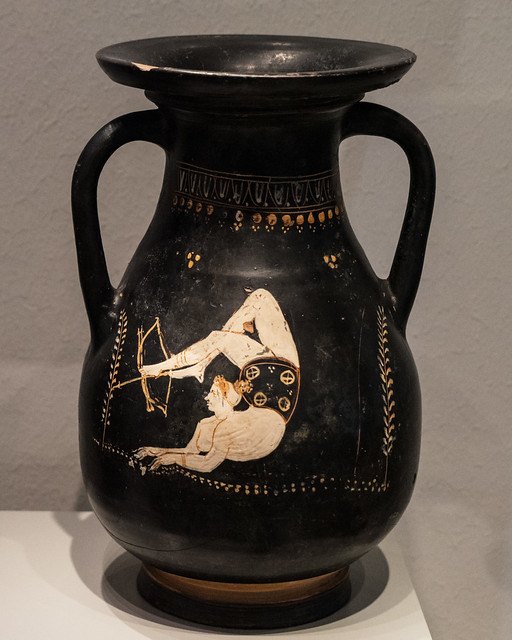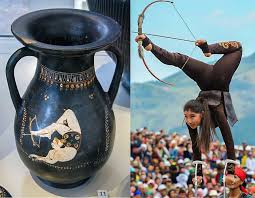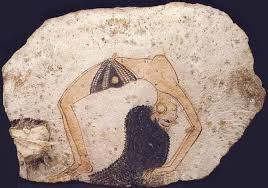Ancient Skill: A Female Acrobat Archer from the 4th Century BCE
The fascinating depiction of a female acrobat archer from the 4th century BCE, likely found on a Gnathia-style vase, offers a truly unique glimpse into the performing arts and the surprising capabilities of women in ancient Greece. Unlike the often idealized or mythological figures on Greek pottery, this particular imagery captures what appears to be a real-life performer, an extraordinary artist whose skill was so impressive it was immortalized on a piece of pottery. The rarity of such a specific, non-mythological scene underscores the exceptional nature of her talent.

Gnathia vases, known for their painted decoration directly onto a glossy black slip, often depicted themes related to women’s lives, theatrical scenes, and Dionysiac motifs. This specific vase, reportedly a pelike (a type of ancient Greek vase), shows the female acrobat in an astonishing pose: shooting arrows with a bow using her feet. This incredible feat of flexibility, strength, and precision suggests a level of physical training and acrobatic prowess that would be remarkable even by modern standards, let alone in the ancient world where such performances would have been a rare and astounding spectacle.

This ancient artwork serves as a powerful reminder that women in antiquity were not confined to the narrow roles often portrayed in historical texts. While archaeological evidence for female warriors or archers in a military context is primarily found among groups like the Scythians (who may have inspired the Amazon myths), this vase depicts a woman as a skilled entertainer, pushing the boundaries of human physical capability. It provides a vivid and tangible connection to a forgotten aspect of ancient Greek society, highlighting the diversity of public life and the appreciation for extraordinary talent that existed over two millennia ago.
